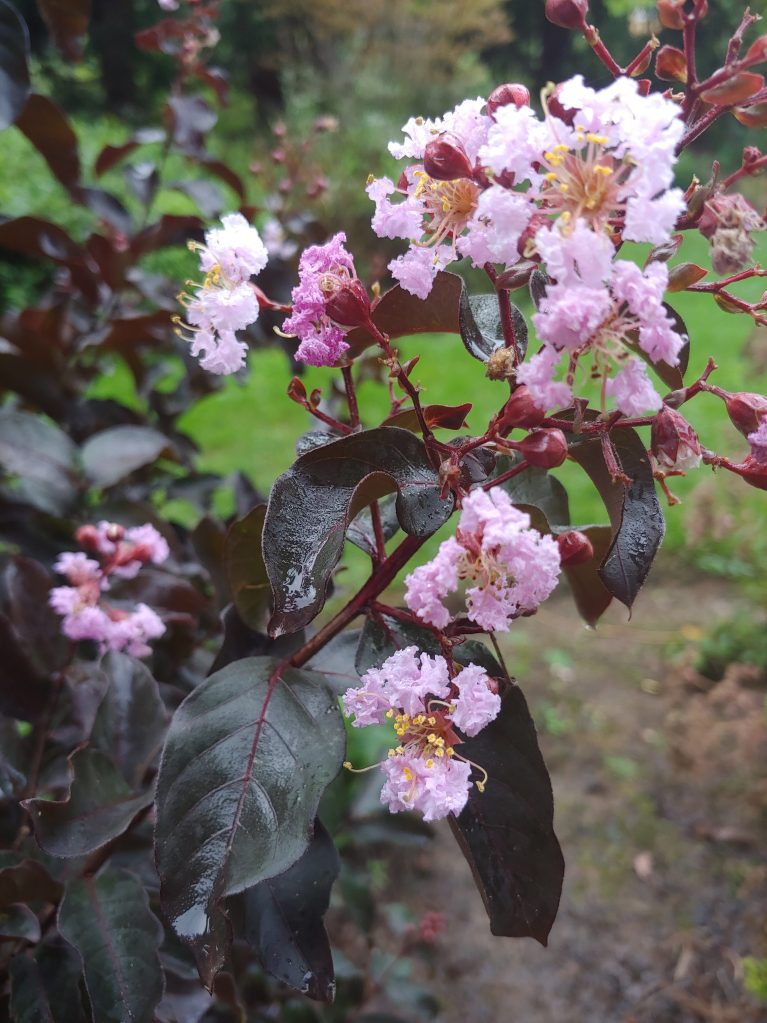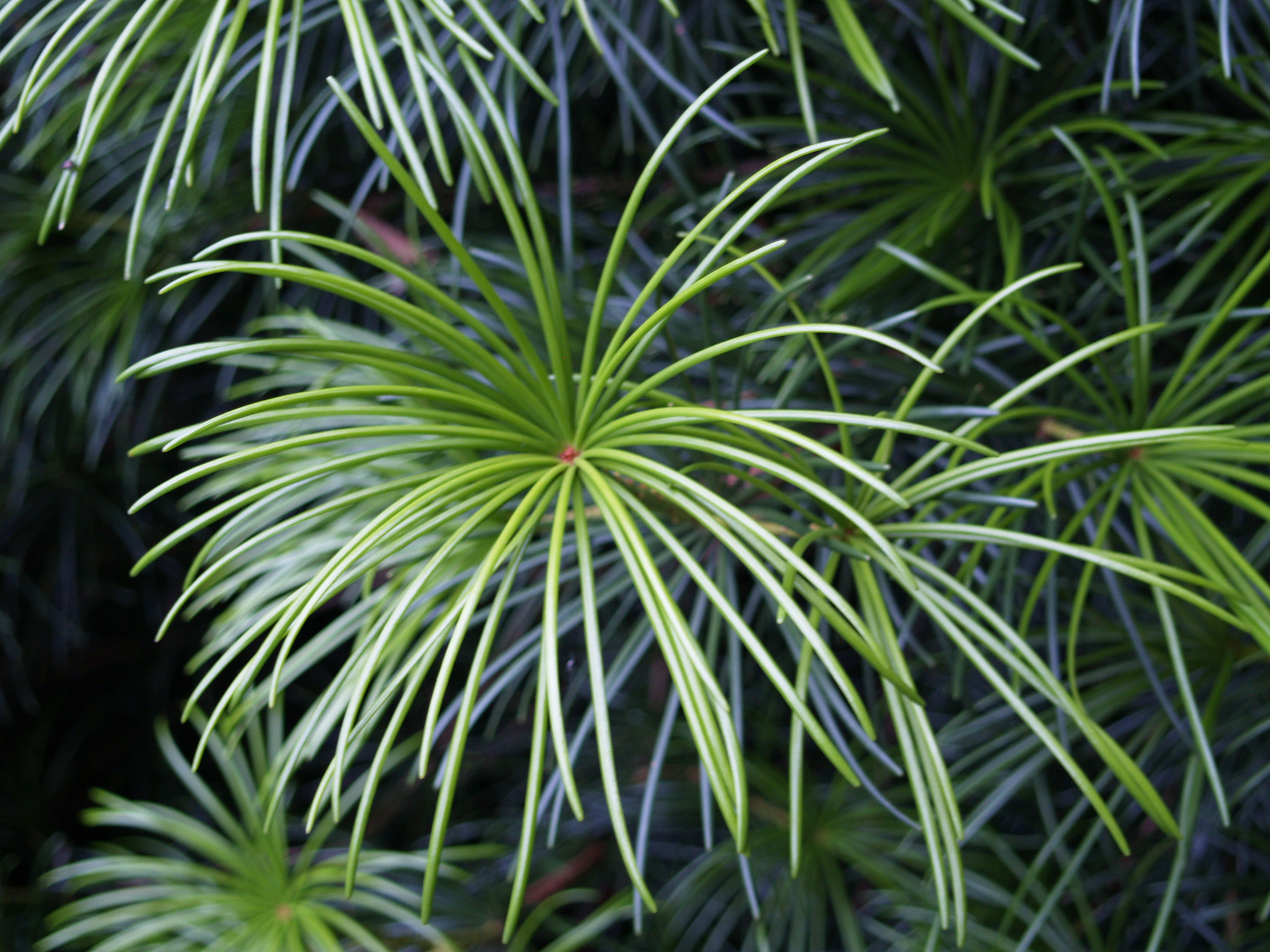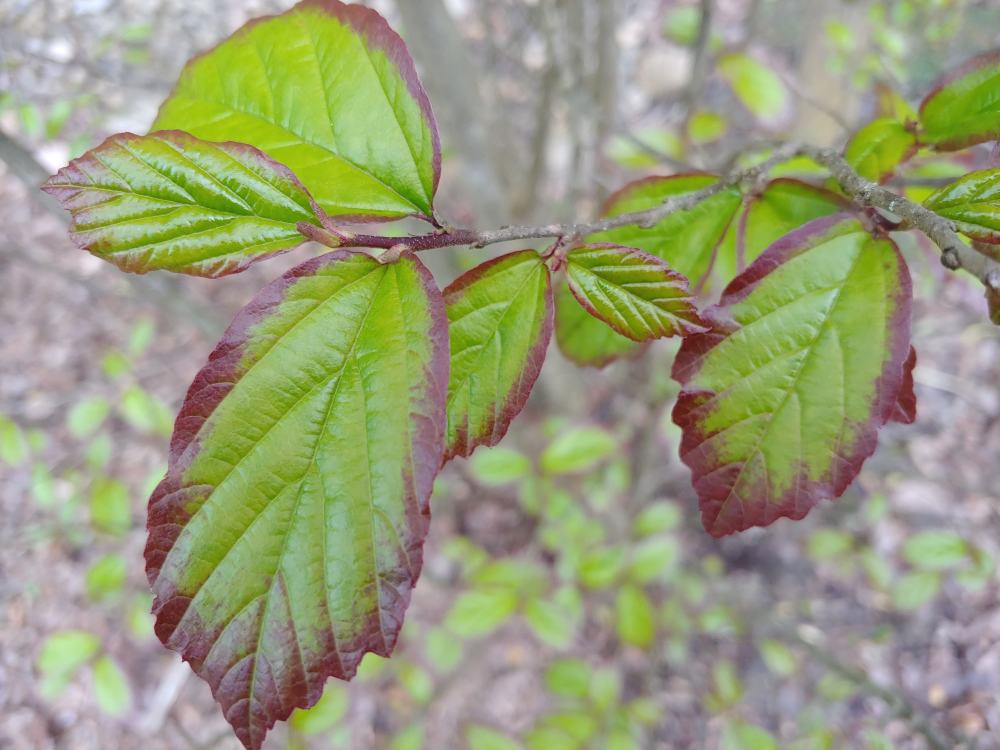This should be the year, the second spring after planting, when two dark leafed crape myrtles (‘Rumblin’ Red and ‘Purple Light’, below) grow to make an impact in the lower, rear garden. This area has been unsatisfactorily bare since a large witch hazel and evergreen holly perished as a bare trickle of a spring orienting beneath the garden shed came back to life after a decade of relative dryness.

My eye is most impressed by tall mass, not by tulip poplars ninety feet tall, but by foliage a time or two taller than I am that encloses a garden space. This garden is surrounded by trees and evergreens of varied heights, and one part of the garden cannot be seen from the others with Japanese maples, hollies, or Alaskan cedars shielding the view.
My efforts to replace the witch hazel and holly with moisture tolerant shrubs have failed to achieve this mass, and planted in slightly drier ground I am encouraged that the crape myrtles will do so. I think that the nearly black leafed crape myrtles will be more effective than a green leafed cousin, though I had no idea where the two would be planted when they were brought home. The selection was made solely upon my enthusiasm after seeing larger specimens of these new introductions, but if the still slightly damp soil can be tolerated I think the trees will be key to remedying my recent disappointment with this area of the garden.
I have steered visitors clear of this lower end of the garden, though occasionally pointing to the drier western and northern borders dominated by splendid, huge katsura and blackgum trees (below). The lower garden is also the only view of two paperbushes (Edgeworthia) that spread to twenty feet, well beyond what any visitor has seen, it seems, and here is some implied skill that I must possess though none was required.

In any case, with the crape myrtles soon to provide enclosure, I became inspired to make more of this lower garden than the skimpy planting of moisture tolerant shrubs and a sad, damp and weedy small section of lawn. After weeks of deliberation, the lawn was dug to construct a mounded planting area so that rainwater will drain around the new plantings. Small boulders were dug in along the edges with a fill of soil and gravel that will be planted with succulents suited to sun on one side and shade on the other.

Several trees, a deeply discounted, off color Japanese Umbrella pine (above), a columnar parrotia (Parrotia perisca ‘Persian Spire’, below) transplanted from overly damp ground, and a yellow stemmed ‘Bihou’ Japanese maple moved from a pot on the patio, were planted soon after the bed was prepared. Two peonies that languished along with a yellow leafed mountain hydrangea in too much shade were transplanted, and a week ago a hefty clump of Japanese Forest grass was divided and planted along the edge.

Two very dwarf Japanese maples have been planted, and certainly this should be enough planting in this relatively small area, but of course there is more to come. A very marginally cold hardy Brazilian orchid tree will be moved from the greenhouse. Even with the protection of the unheated greenhouse the orchid tree dies to the ground each year, so instead of a tree it will grow as a shrub, which leaves some small space for another Japanese maple that will anchor the most visible corner as the lower garden is entered.
The vision for this improved lower garden is still a work in progress, with more planting to come, and of course it will not feel complete until the parrotia and maples are in leaf. But also, the dark leafed crape myrtles must leap in growth to provide the enclosure expected to frame the new garden, to possibly turn it from a disappointment to become a favored area of the garden.
Is the orchid tree Bauhinia forficata? And where did you buy it?
It’s been several years, so I’m not certain. Maybe nurcar.
It’s been several years, so I’m not certain. Maybe nurcar. And yes, its B. furficata.
Hmmm . . . I am none too keen on crape myrtles. They were such a ‘cop out’ tree among a few so-called landscape companies that I did inspections for in the past. It is a long story, but to be brief, they became too common here for too many of the wrong situations. Nonetheless, we added a significant multi-trunked specimen and three more single trunked trees of another cultivar this past winter. I can justify it though. There is so much floral color in the landscapes for spring, but not much for summer. Crape myrtles are ideal for that.
They have become our most popular tree, by far, so I must monitor new introductions. I prefer many other trees, but they have a purpose. In my garden I was looking for the fast growing dark foliage more than the flower.
Will they be pollarded to enhance the dark foliar color?
I’ve seen older plants at the breeder’s nursery in southern Mississippi and they hold their color through the summer.
Are they pollarded? I intend to grow the Schwedler maple, not because I like the color, but because I like the tree. I intend for it to take on its natural form because that is how I remember them. However, the foliar color is better with pollarding. I may pollard one specimen somewhere just to see what it does.
I do as little pruning as possible, so these will grow in their natural form.
It’s interesting to hear how you’re tackling the re-emergence of your spring. We have a stream which runs under part of our lawn and surfaces after heavy rain. I planted a weeping willow in the hope of absorbing some of the excess moisture and this was partially successful, but there’s still an area which gets waterlogged. Right now I’m experimenting with replacing the grass in that area with a moss garden which is looking promising, but it’s early days.
Over thirty three years I’ve had to renovate several areas of the garden as trees have been damaged by storms, but the wet area has been the slowest to recover. I’m looking forward to a substantial improvement this year.